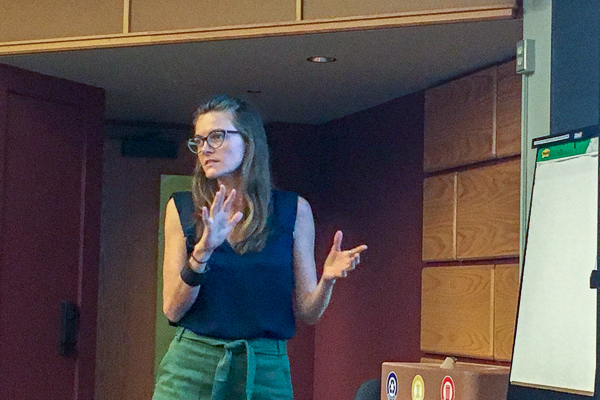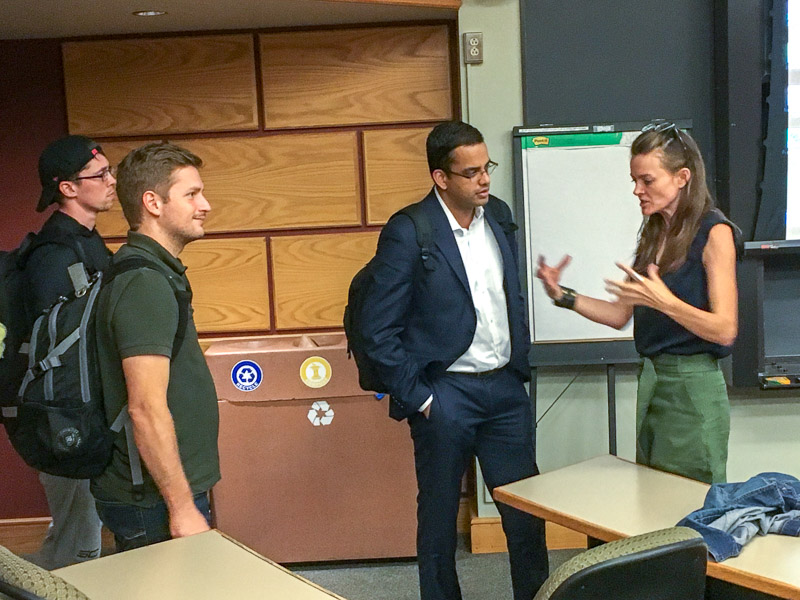Carrie George, MPA/MILR ’06, on the future of ethical supply chain

Do you know where the materials in your cellphone came from? Chances are, the manufacturer doesn’t either.
Today, in accordance with federal law, companies employ third-party audits to determine the “chain of custody” for the minerals used in their products. These “chains” don’t necessarily tell you where the components of your device were mined, but rather lists the players involved in an example batch of the manufacturer’s inputs. This is often the most transparency a firm can muster; the nuances within sourcing and refining make “full traceability” quite difficult to establish.
This is part of what makes the work of Carrie George, MPA/MILR ’06, so unique. As the head of policy and programs for the responsible sourcing of minerals at Apple, and later the director of responsible sourcing and sustainability for Brilliant Earth, she was tasked with knowing where the materials came from, under what conditions they are produced and ensuring the most ethical options available, despite the nuances often at play along the chain.
Earlier this semester, George shared her insights and her experiences with the Cornell community as part of the Center for Sustainable Global Enterprise’s speaker series called Leaders in Sustainable Global Enterprise. Each week, the series explores a topic related to a business and environmental or social issue in a talk that is open to the general public as well as students for credit.
Tracing materials through blockchain
At the talk, George delved into this concept of traceability, discussing some of the key topics currently facing the field. One recent development in traceability is the integration of blockchain, a computing technology that can produce tamper-proof ledgers, which opens up new possibilities for following resources such as diamonds through the supply chain.
With blockchain, firms involved in the diamond manufacturing process can seamlessly and jointly maintain a digital record on each stone, and all parties can make agreements (“smart contracts”) that are automatically enforced in their dealings through blockchain.
“The idea of smart contracts and smart Anti Money Laundering (AML) processes, where [firms must] agree to certain things on multiple levels, you have transparency going forward, and you’re not trying to retranslate [sourcing information] 40 times… is phenomenally powerful,” she noted.
Responsible sourcing vs recycling
Responsible sourcing is about more than just tracking materials; once a company determines where a mineral comes from, it must orient itself to change that source when necessary. One example of a shift a number of organizations and companies are exploring originated as a response to the depletion of finite resources like cobalt and lithium, which are mined for their use in consumer electronics.
Though the speed at which many of these minerals are running out is a topic of much debate, companies are already recognizing that some sort of change to their sourcing methods will soon be necessary.

George drew from her experience sourcing for the smartphone industry to characterize the situation: “There are other sources for these resources… The offshore potential of mining is probably phenomenal but our oceans are actually really important to human life.” To many companies, an eventual crossroads approaches: either prepare for the financial burden and environmental risk of turning to offshore mining once traditional mines run low, or invest in device recycling programs.
For now, cellphone recycling has a long way to go before it’s a viable alternative to traditional or offshore mining. The process of converting old phones into useful materials is rife with challenges. For one, the chemical makeup of components found in lithium ion batteries changes regularly as technology improves, so recyclers must regularly alter the way they refine the materials extracted from old phones.
Nuances also abound in the methods different companies employ to make their batteries fit their own cost strategies. “Each supplier has their secret sauce,” George explained, be it a coating on a cathode or a unique manufacturing process. This can cause small but significant differences between phones that lead to even more complications for refineries.
Industry transformation
When asked how she foresaw this dream of a robust phone recycling network becoming a reality, George concluded that though she would prefer to see corporations and citizens leading the charge to a “closed-loop” cellphone manufacturing system, legislation is the most likely the most direct and time-sensitive avenue to this sort of change. “I wish it could be a groundswell of 15-30 year olds who would demand ‘I want my phone to be recycled,’ but I don’t see that happening effectively in this climate with so many pressing issues around them.”
Regardless of how it happens, George is likely to play a significant role in the industry’s transformation, as she now prepares to make a career move into the recycling technologies space as VP, head of Sustainability Solutions at EverLedger.
Why make such a major shift? George has her mind on future generations. “I want to do something that’s going to be important for my kids and nieces and nephews.”
According to George, however, pushing the world toward more progress in recycling isn’t a feat reserved for those in the upper echelons of corporate leadership. “I can tell you how often I’ve gotten to do things at companies just because of one personalized letter from a customer. It sounds funny, but sometimes those one-in-a-million shots make the difference.”
—Written by Paul Russell ’19, a student intern for the Center for Sustainable Global Enterprise


Comments